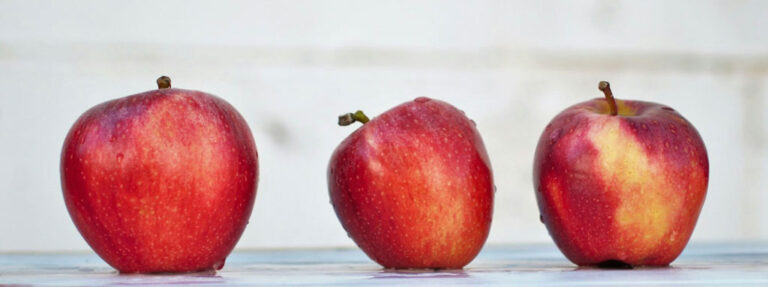Chicago: Food City
In 2011, Michelin released its first “red” guide to Chicago restaurants and hotels. Chicago became the third city in the United States, after New York and San Francisco, to have a red guide. To some, this may seem like a minor matter, but the red guide is a marker of culinary excellence for gourmets, and its release was a sign of how important of a destination Chicago has become for culinary tourists.
High-end restaurants have bloomed in Chicago in the past 20 years. Current tourists come to experience places like the molecular gastronomy temple Alinea, currently listed by one source as the ninth best restaurant in the world. Chef Grant Achatz takes apart foods into basic components, and reconstructs them into beautiful (and very expensive) concoctions. Grant Achatz’s other restaurant, Next, features a new cuisine every few months. Like Alinea, one buys pre-paid “tickets” rather than making reservations. At Next you can buy season tickets for the various incarnations of the restaurant, in the same way you purchase a theater subscription (hint for AAG gourmands, if you sign up to their Facebook page, a couple of tables usually are available each day). Other places such as Avez, the Gage, Girl and the Goat, and Publican feature Midwestern ingredients especially house-cured meats.
While these high-end restaurants may bring tourists to the city, Chicago is as least as famous for its hearty everyday foods. These include the Chicago hot dog, topped with mustard, tomatoes, grilled or raw onions, a pickle spear, “sport” peppers, and celery salt, and the even heartier Italian beef, a roasted beef sandwich somewhat like a French dip, served on Italian bread, and topped with hot or sweet pepper. It is particularly delicious dipped back into the gravy. Both of these sandwiches grew out of the Depression years, providing a cheap meal to hungry Chicagoans. The World War II era saw the invention of the deep-dish pizza, a similarly hearty meal in one dish (and one slice). Later, Chicago was the site of the invention of the gyro sandwich (at least the ground lamb and beef on a rotating skewer variety), and more recently, the Puerto Rican jibarito, a steak sandwich served between two mashed and fried plantain slices (vegetarian and other varieties are now also available).
Chicago is not a food city just because of the food that is served here. From its beginning, Chicago has been a place that processed, stored, and sold the ingredients of the Midwest. Chicago was the US capital of industrial candy manufacturing, home or former home to Brach’s, Mars, Toostie Roll, Curtiss Candies (makers of Baby Ruth and Butterfinger bars), Wrigley’s gum, and many others. While many of these plants and companies are now gone, the Mars plant still makes candy on the far west side, and Tootsie Roll is still on the southwest side. Nestlé bought Curtiss Candies but manufactures candy bars in the same plant as before, just south of O’Hare airport. Still today, if you take a walk west along the north bank of the Chicago River, past the Merchandise Mart, and then cross the north branch of the river at Kinzie, you may start smelling chocolate. This comes from Blommer’s, the largest processor of chocolate in North America, and supplier to many other manufacturers, which is located just beyond the river.
Probably the most famous Chicago sites related to industrial food are the Chicago Board of Trade and the Chicago Union Stockyards. The Board of Trade began as an association of grain buyers and sellers who traded along the south bank of the Chicago River, but soon developed into the largest grain exchange in the world. It is now part of CME Group, having merged with the once much smaller Chicago Mercantile Exchange, which itself began as the Chicago Butter and Egg Board. The Board of Trade Building, located prominently at the south end of the LaSalle Street urban canyon, is worth a tour. Topped by a faceless statue of Ceres, the Roman god of grain, the Arc Deco building’s interior is filled with sculptural allegories to grain. The Chicago Union Stockyards closed in 1971, but the stockyards area, on the near southwest side, still hosts one meatpacker, and The Plant, a vertical farm and food business incubator, which at the moment includes a kombucha manufacturer, two aquaponics companies, a bakery, and a sustainable indoor prawn farm.
The Plant is one example of how urban agriculture has been growing in the Chicago area. Others include two for-profit large-scale aqauponics facilities, non-profit urban farms including the Chicago branch of Milwaukee based Growing Power, and Growing Home, a work-training program in the Englewood neighborhood, and many others. Community gardens now dot many Chicago neighborhoods. While this may all seem new, in many ways it brings the city back to its roots. Much of Chicago was once a swamp, but after being drained, much of it was also very good agricultural land. Sandy Lake View was once a leading producer of celery. What is now the South Side was a produce producing area, and part of the North Side was covered with greenhouses, producing flowers and other plants for the city. The area near O’Hare (once called Old Orchard) was a farming zone, also largely producing for the city, but also producing peas and other vegetables for canning by Chicago-based Libby’s.
At its very beginning, the town of Chicago was consisted of collection of taverns and houses that were built between 1829 and 1833 around “Wolf Point,” at the confluence of the North and South branches of the Chicago River. The most famous of these was the Sauganash Hotel, where proprietor Mark Beaubien would play the fiddle while townsfolk and hotel patrons danced. Hearty food was served. Today, the flow of the river has been reversed, and the river is wider, but Chicago still is a place that welcomes its visitors with hearty food and good cheer, as well as more gourmet possibilities. Enjoy your time in our city and eat well.
—Daniel Block
Chicago State University

